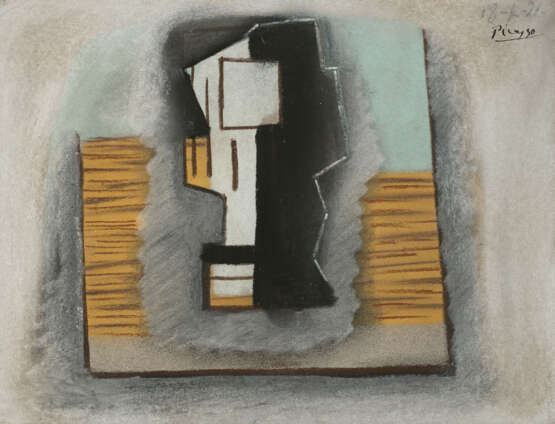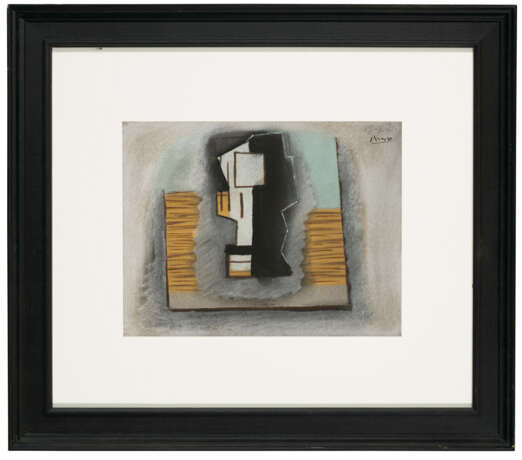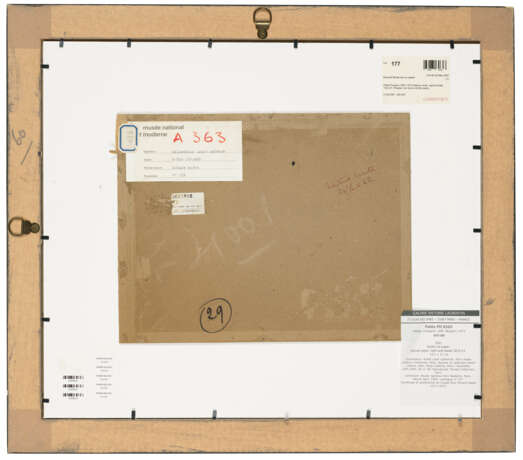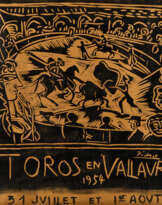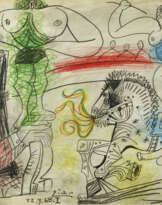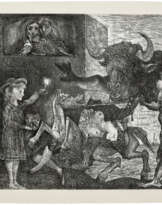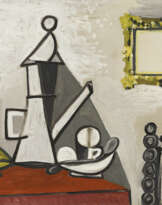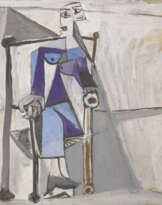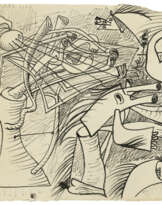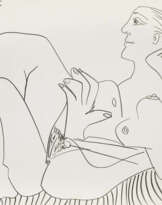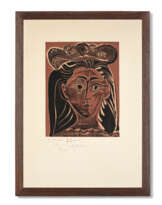ID 792510
Лот 452 | PABLO PICASSO (1881-1973)
Оценочная стоимость
£ 150 000 – 250 000
Nature morte
signed and dated '18-4-21- Picasso' (upper right)
pastel on tinted paper
9 7⁄8 x 12 7⁄8 in. (25 x 32.6 cm.)
Executed on 18 April 1921
Provenance
André Level, Paris.
André Lefèvre, Paris, by 1963, and thence by descent; estate sale, Aguttes, Paris, 21 December 2007, lot 153.
Private collection, France, by whom acquired at the above sale; sale, Aguttes, Paris, 5 December 2014, lot 43.
Acquired at the above sale by the present owner.
Exhibited
Paris, Musée national d'art moderne, Collection André Lefèvre, March - April 1964, no. 251.
Special notice
Artist's Resale Right ("Droit de Suite"). Artist's Resale Right Regulations 2006 apply to this lot, the buyer agrees to pay us an amount equal to the resale royalty provided for in those Regulations, and we undertake to the buyer to pay such amount to the artist's collection agent.
This lot has been imported from outside of the UK for sale and placed under the Temporary Admission regime. Import VAT is payable at 5% on the hammer price. VAT at 20% will be added to the buyer’s premium but will not be shown separately on our invoice.
Post lot text
‘One and the same artist was painting classicist nudes, portraits, scenes, and works in the spirit of Synthetic Cubism—at first sight quite incompatible.’ This is how Carsten-Peter Warncke defined Picasso’s works at the turn of the decade, when Nature morte was executed (in Pablo Picasso: 1881-1973, The Works 1890-1936, 1995, vol. I, p. 245). By 1921, the artist was indeed working in two styles. In addition to his celebrated cubist compositions, during the late 1910s and early 1920s Picasso experimented with a new classicizing manner, that would recall the balance, order and harmony of the ancient Greece and Rome. While the latter was employed in figurative works, most of the artist’s still lives featured distinctive Cubist traits. However, the two styles were never mutually exclusive. ‘It is as if the artist had discovered at the height of Cubism volume often strove to prevail or make its presence felt, albeit indirectly. Now, by providing it an outlet in the form of ‘classicising’ representation, his hands were freer to undertake the task of evolving an absolutely flat idiom. In other words, by returning to more or less traditional painting, a kind of split took place that allowed the artist to execute works liberated from the constraints he had been forced to combat in the past. This late form of Cubism would therefore not be completely comprehensible without the return to tradition, which assumed renaissance principles and left the artist free to work in his own independent way" (J. Palau i Fabre, Picasso, From the Ballets to Drama (1917-1926), Cologne, 1999, p. 316).
A wonderful example of this incredibly fertile creative moment, Nature morte’s delicate, subdued palette is reminiscent of his Neoclassical figurative works of the same years. At the same time, this work harbours the hallmarks of Synthetic Cubism: simpler shapes, flattened images, and the incorporation of textures and patterns. This almost-constructionist collage approach reveals Picasso’s profound attention to the formal qualities of his work. The dominant blocks of colour emulate paper cut-outs and faux bois glued onto the canvas: elements which played a central role in the artist's papiers collés. As Elizabeth Cowling has written, ‘Most of Picasso's still lives of 1918-1924 belong to short-lived series involving subtle formal variations on a strictly limited theme. Their imagery seems secondary to their formal devices--a pretext for the variations explored throughout the series as a whole. These paintings are full of teasing ambiguities, which mitigate the effect of rationality and impersonality. Nevertheless, one senses that Picasso was primarily concerned with formal arrangements – with the creation of balanced, although asymmetrical, compositions, ingenious combinations of rhyming shapes, and contrasts of tone and colour and plain and patterned surfaces. In their poise, control, and subtlety, they remind one of Chardin's modest kitchen still lives, in which a limited repertoire of everyday objects is shuffled and reshuffled to form a series of variations on the same melodic theme’ (Picasso, Style and Meaning, London, 2002, pp. 379, 381-382).
| Автор: | Пабло Пикассо (1881 - 1973) |
|---|---|
| Техника исполнения: | Пастель |
| Автор: | Пабло Пикассо (1881 - 1973) |
|---|---|
| Техника исполнения: | Пастель |
| Адрес торгов |
CHRISTIE'S 8 King Street, St. James's SW1Y 6QT London Великобритания | |
|---|---|---|
| Предосмотр |
| |
| Телефон | +44 (0)20 7839 9060 | |
| Комиссия | see on Website | |
| Условия использования | Условия использования |
